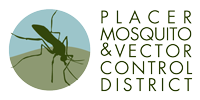Creative technology and innovation to maximize resources is a District core value and strategic priority. We believe the right technology and innovations can help us better serve and protect public health in Placer County. We evaluate new technology through our applied research program before incorporation into regular operations.
Data Management System
The District relies on scientific data about mosquito abundance, field inspections and treatments to plan and execute preventative and responsive mosquito control operations. Since 2012, our priority has been to integrate a data management system that allows field and laboratory staff to input and receive information that assists in operational decision-making. In 2020, we upgraded our data management system to the newest version of MapVision.
Automatic Counting Adult Mosquito Traps
In 2018, the District evaluated BG-Counter automatic counting mosquito traps. This innovative device counts mosquitoes as they enter the trap and transmits mosquito counts in 15-minute intervals. This shows us when mosquitoes are most active and helps us find useful patterns to plan mosquito control treatments. The District currently has eight BG-Counters and uses them to monitor seasonality of mosquitoes, efficacy of some mosquito adulticide treatments, capture large amounts of mosquitoes needed for insecticide evaluation and establish a multi-year data set to be used for future applied research.
3D Printer
The mosquito and vector control industry has a long history of creating customized equipment and instruments to fit specific needs. 3D printing allows us to continue this tradition by creating custom parts and devices that are not available or to fabricate alternatives to items that are difficult or cost prohibitive.






